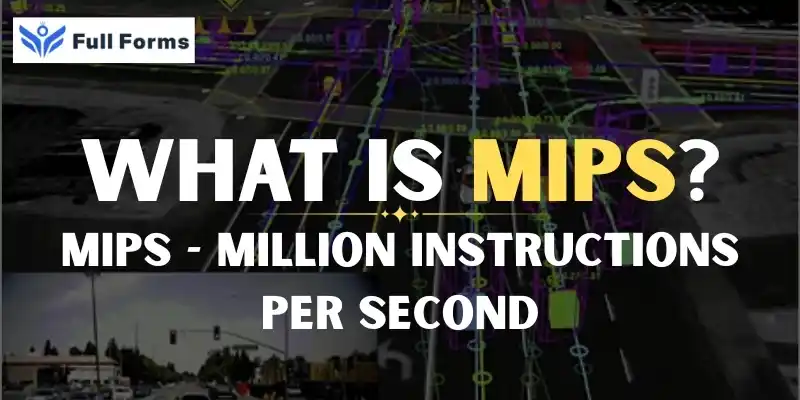Million Instructions Per Second
(MIPS)

Description
What does MIPS stand for?
MIPS stands for "Million Instructions Per Second." It tells you how well or fast the CPU (central processing unit) of a computer works.
MIPS tells us how many millions of instructions a computer can follow in a second.
What does "Instruction" mean?
An instruction is a basic job that a CPU does. This could be as easy as:
- Putting two numbers together
- Transferring data from one location to another
- Putting values side by side and comparing them
- Keeping information in your head
There are thousands or millions of these little commands in every program you use, like a game or a web browser.
What is it about MIPS that makes it so important?
You can use MIPS to find out how fast a CPU is. Most of the time, a processor with a higher MIPS number can do more things in less time.
For example:
- A CPU with 10 MIPS can process 10 million instructions every second.
- A CPU with 1000 MIPS can handle 1 billion instructions per second.
How do you find out MIPS?
Here is a simple formula:
MIPS = Clock Speed (in MHz) / Cycles Per Instruction (CPI)
Example: If your processor runs at 1000 MHz and takes 2 cycles per instruction:
1000 / 2 = 500 MIPS (500 million instructions per second)
Is it always better to have more MIPS?
No, not always. Here’s why:
- Some instructions take more time than others.
- A high MIPS number doesn’t guarantee great performance in tasks like gaming or multitasking.
- There’s no universal way to measure MIPS, so results may vary across devices.
Where can MIPS still be useful?
- In embedded systems like washing machines or routers.
- In comparing basic processors used in simple devices.
- As a teaching tool in schools to understand how CPUs work.
MIPS and Other Ways to Check on Your Progress
| Full Form | What it Looks At | Used In |
|---|---|---|
| MIPS | CPU’s speed (Million Instructions Per Second) | Basic CPUs and embedded systems |
| FLOPS | Floating Point Operations Per Second | Supercomputers and GPUs |
| Gigahertz (GHz) | Clock speed (ticks per second) | CPU’s raw performance |
| Benchmarks | Real-world performance tests | PCs, laptops, and gaming consoles |
MIPS in the Real World
- A simple calculator chip could work at 1–5 MIPS.
- Home computers in the 1980s ran at 0.5–1 MIPS.
- Modern smartphones can exceed 1000 MIPS.
- Supercomputers can process data at billions of MIPS.
MIPS is also a name, did you know that?
MIPS Technologies is a company that makes processor architectures. Older devices like PlayStation 1 and 2 used MIPS-based chips. But this is different from the MIPS speed unit.
Last Thoughts
MIPS is a simple and helpful way to measure CPU speed, especially in small or embedded systems.
However, it’s not always the best way to measure real performance—benchmarks and tests offer better insight today.
So next time someone says “MIPS,” you’ll know exactly what they mean!
